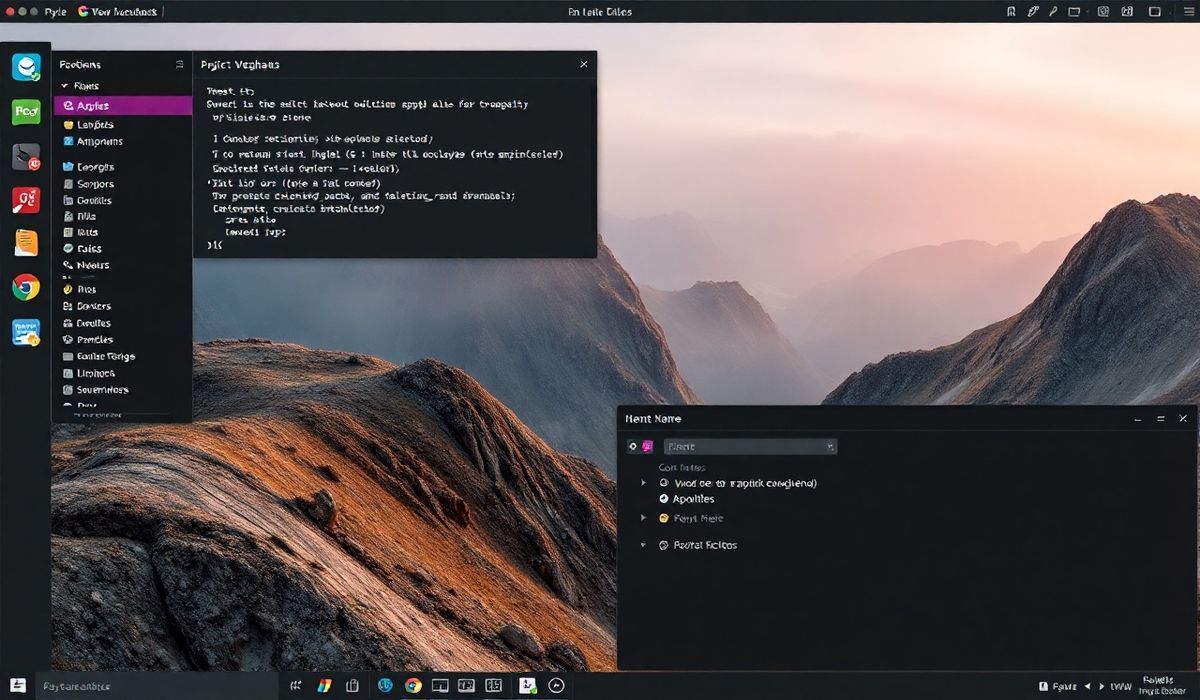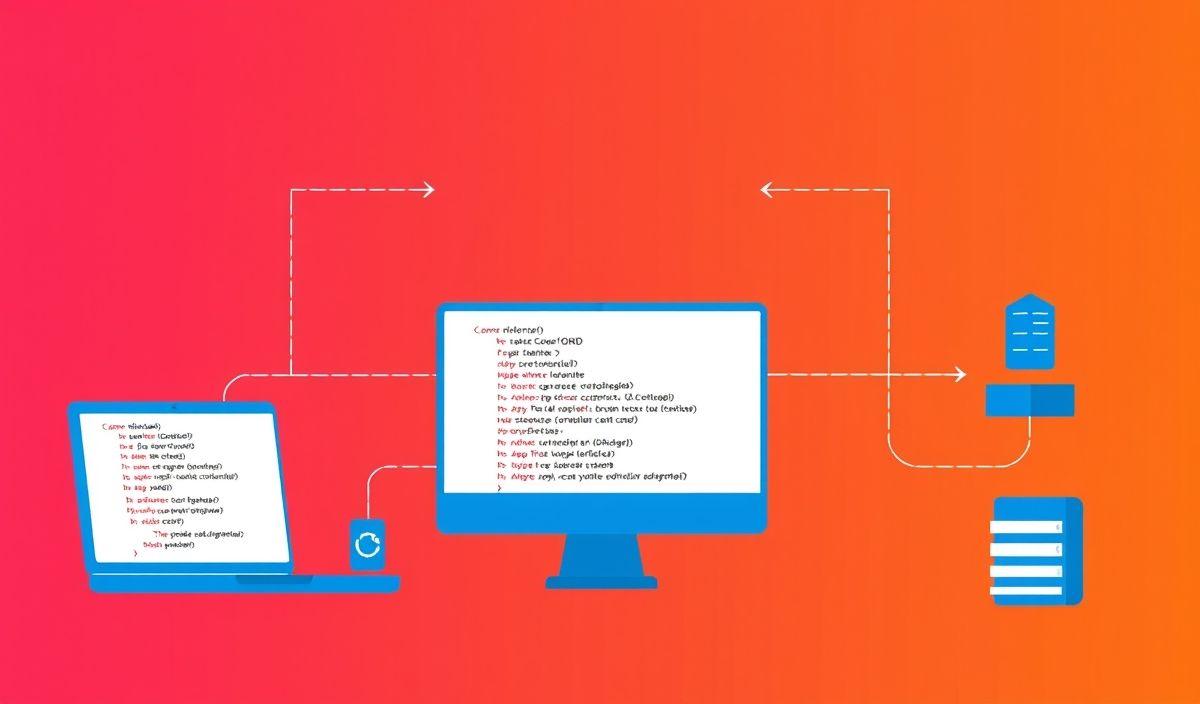PyQt: The Modern Interface for Python GUI Development
PyQt is a powerful set of essential tools for creating modern, interactive, and cross-platform GUI applications in Python. Built as Python bindings for the popular Qt framework, PyQt lets developers create fully-functional, visually appealing desktop applications for Windows, macOS, and Linux. Its extensive library of modules and robust API ensures that developers can construct everything from small utilities to fully-featured enterprise-grade applications.
Being supported by the Qt toolkit, PyQt allows seamless integration of various features such as widgets, graphics, multimedia, networking, and more — making it a favorite framework for Python developers who need rich user interfaces. The latest versions of PyQt support Qt 5 and Qt 6, with compatibility for Python 3.x.
This blog post introduces you to PyQt, explains its key APIs, and guides you in building a generic application that ties them all together.
PyQt API Explanations with Code Snippets
Below are 20+ essential APIs provided by PyQt, along with their usage and code examples.
1. QApplication
QApplication is the foundation of every PyQt application and is responsible for event handling and application-wide settings.
from PyQt5.QtWidgets import QApplication
app = QApplication([])
print("QApplication initialized!")
app.exec_()
2. QWidget
QWidget is the base class for all UI elements. It represents any visual object, including windows and individual widgets.
from PyQt5.QtWidgets import QApplication, QWidget
app = QApplication([])
window = QWidget()
window.setWindowTitle("My First PyQt Window")
window.resize(400, 300)
window.show()
app.exec_()
3. QLabel
QLabel is used to display text or images in PyQt applications.
from PyQt5.QtWidgets import QApplication, QLabel
app = QApplication([])
label = QLabel("Hello, PyQt!")
label.show()
app.exec_()
4. QPushButton
QPushButton creates interactive buttons that can trigger specific actions.
from PyQt5.QtWidgets import QApplication, QPushButton
def on_click():
print("Button clicked!")
app = QApplication([])
button = QPushButton("Click Me")
button.clicked.connect(on_click)
button.show()
app.exec_()
5. QLineEdit
QLineEdit creates an editable text field for user input.
from PyQt5.QtWidgets import QApplication, QLineEdit
app = QApplication([])
line_edit = QLineEdit("Default Text")
line_edit.show()
app.exec_()
6. QTextEdit
QTextEdit is a widget that supports multiple lines of editable text.
from PyQt5.QtWidgets import QApplication, QTextEdit
app = QApplication([])
text_edit = QTextEdit()
text_edit.setText("This is a QTextEdit widget!")
text_edit.show()
app.exec_()
7. QComboBox
QComboBox provides a dropdown menu for users to select from predefined options.
from PyQt5.QtWidgets import QApplication, QComboBox app = QApplication([]) combo = QComboBox() combo.addItems(["Option 1", "Option 2", "Option 3"]) combo.show() app.exec_()
8. QVBoxLayout/QHBoxLayout
These are layout managers for arranging widgets vertically or horizontally.
from PyQt5.QtWidgets import QApplication, QWidget, QVBoxLayout, QLabel, QPushButton
app = QApplication([])
window = QWidget()
layout = QVBoxLayout()
layout.addWidget(QLabel("Label 1"))
layout.addWidget(QPushButton("Button 1"))
window.setLayout(layout)
window.show()
app.exec_()
9. QMessageBox
QMessageBox is used to display popup messages.
from PyQt5.QtWidgets import QApplication, QMessageBox
app = QApplication([])
msg_box = QMessageBox()
msg_box.setText("This is a message box.")
msg_box.exec_()
10. QFileDialog
QFileDialog provides file and directory selection interfaces for users.
from PyQt5.QtWidgets import QApplication, QFileDialog
app = QApplication([])
file_path, _ = QFileDialog.getOpenFileName(None, "Select a File")
print(f"Selected file: {file_path}")
app.exec_()
11. QCheckBox
QCheckBox creates a box that users can check or uncheck.
from PyQt5.QtWidgets import QApplication, QCheckBox
app = QApplication([])
checkbox = QCheckBox("Check me!")
checkbox.show()
app.exec_()
12. QRadioButton
QRadioButton creates selectable buttons where only one can be active among a group.
from PyQt5.QtWidgets import QApplication, QRadioButton
app = QApplication([])
radio_button = QRadioButton("Option A")
radio_button.show()
app.exec_()
13. QSlider
QSlider is a control that allows users to select a value from a range by sliding a marker.
from PyQt5.QtWidgets import QApplication, QSlider app = QApplication([]) slider = QSlider() slider.setMinimum(0) slider.setMaximum(100) slider.setOrientation(Qt.Horizontal) slider.show() app.exec_()
14. QSpinBox
QSpinBox provides an incremental number selector.
from PyQt5.QtWidgets import QApplication, QSpinBox app = QApplication([]) spin_box = QSpinBox() spin_box.setMinimum(1) spin_box.setMaximum(10) spin_box.show() app.exec_()
15. QProgressBar
QProgressBar is used to visually represent progress for a task.
from PyQt5.QtWidgets import QApplication, QProgressBar app = QApplication([]) progress_bar = QProgressBar() progress_bar.setValue(50) progress_bar.show() app.exec_()
16. QTabWidget
QTabWidget implements a tabbed interface.
from PyQt5.QtWidgets import QApplication, QTabWidget, QLabel
app = QApplication([])
tab_widget = QTabWidget()
tab_widget.addTab(QLabel("Content for Tab 1"), "Tab 1")
tab_widget.addTab(QLabel("Content for Tab 2"), "Tab 2")
tab_widget.show()
app.exec_()
17. QTreeWidget
QTreeWidget creates a hierarchical tree display.
from PyQt5.QtWidgets import QApplication, QTreeWidget, QTreeWidgetItem app = QApplication([]) tree = QTreeWidget() tree.setHeaderLabels(["Item Name", "Description"]) parent_item = QTreeWidgetItem(["Main Item", "This is a parent item"]) child_item = QTreeWidgetItem(["Child Item", "This is a child item"]) parent_item.addChild(child_item) tree.addTopLevelItem(parent_item) tree.show() app.exec_()
18. QTableWidget
QTableWidget creates a grid-based table interface.
from PyQt5.QtWidgets import QApplication, QTableWidget, QTableWidgetItem
app = QApplication([])
table = QTableWidget(3, 2)
table.setHorizontalHeaderLabels(["Column 1", "Column 2"])
table.setItem(0, 0, QTableWidgetItem("Cell (0,0)"))
table.setItem(0, 1, QTableWidgetItem("Cell (0,1)"))
table.show()
app.exec_()
19. QCalendarWidget
QCalendarWidget displays an interactive calendar.
from PyQt5.QtWidgets import QApplication, QCalendarWidget app = QApplication([]) calendar = QCalendarWidget() calendar.show() app.exec_()
20. QTimer
QTimer triggers periodic actions or events.
from PyQt5.QtCore import QTimer
def update():
print("Timer triggered!")
timer = QTimer()
timer.timeout.connect(update)
timer.start(1000) # Trigger every 1000ms (1 second)
A Generic Application Using the APIs
Here’s a simple PyQt application demonstrating multiple widgets and APIs in a cohesive example:
from PyQt5.QtWidgets import QApplication, QWidget, QLabel, QPushButton, QVBoxLayout, QLineEdit, QProgressBar
from PyQt5.QtCore import QTimer
class MyApp(QWidget):
def __init__(self):
super().__init__()
self.init_ui()
def init_ui(self):
self.setWindowTitle("Generic PyQt Application")
self.resize(400, 300)
self.layout = QVBoxLayout()
# Add a QLabel
self.label = QLabel("Enter your name:")
self.layout.addWidget(self.label)
# Add a QLineEdit
self.name_input = QLineEdit()
self.layout.addWidget(self.name_input)
# Add a QPushButton
self.button = QPushButton("Greet")
self.button.clicked.connect(self.say_hello)
self.layout.addWidget(self.button)
# Add a QProgressBar
self.progress_bar = QProgressBar()
self.progress_value = 0
self.progress_bar.setValue(self.progress_value)
self.layout.addWidget(self.progress_bar)
# Add a timer to simulate progress
self.timer = QTimer()
self.timer.timeout.connect(self.update_progress)
self.setLayout(self.layout)
def say_hello(self):
name = self.name_input.text()
self.label.setText(f"Hello, {name}!")
self.progress_value = 0
self.timer.start(100) # Start progress bar animation
def update_progress(self):
if self.progress_value < 100:
self.progress_value += 1
self.progress_bar.setValue(self.progress_value)
else:
self.timer.stop()
# Run the application
app = QApplication([])
my_app = MyApp()
my_app.show()
app.exec_()
Conclusion
PyQt is a versatile and user-friendly framework for developing sophisticated GUI applications in Python. Whether you're building a simple tool or a complex, feature-rich app, PyQt's extensive API has you covered. Start experimenting today by using the code snippets and example above to bring your ideas to life! Happy coding! 😊




